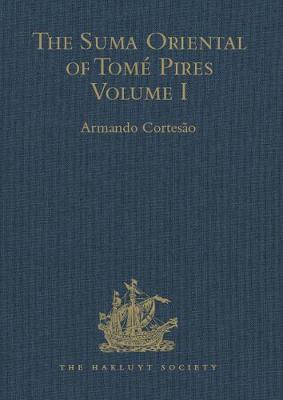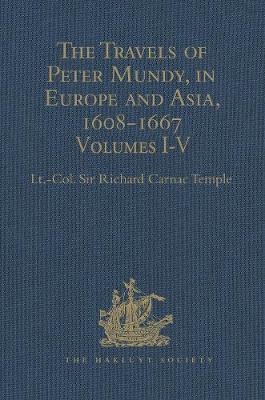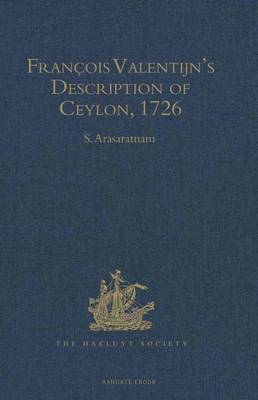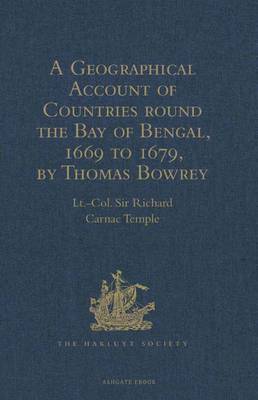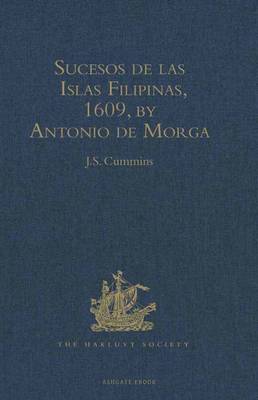Hakluyt Society, Second
7 total works
The Resolution Journal of Johann Reinhold Forster, 1772-1775
by Michael E. Hoare
The Suma Oriental of Tome Pires
Translated from the Portuguese MS in the Bibliotheque de la Chambre des Deputes, Paris. Containing the translated Books I-V of the Suma Oriental. The main pagination of this and the following volume (Second Series 90) is continuous.
This is a new print-on-demand hardback edition of the volume first published in 1944.
The Journey of William of Rubruck to the Eastern Parts of the World, 1253-55
The texts of Willem van Ruusbroec and Giovanni da Pian del Carpine, translated from the Latin and edited, with an Introductory Notice. See also Second Series 173.
This is a new print-on-demand hardback edition of the volume first published in 1900.
The Travels of Peter Mundy, in Europe and Asia, 1608-1667
by Sir Richard Carnac Temple
Continued from Second Series 17. From the Rawlinson MS. A. 315 in the Bodleian Library.
Continues in Second Series 45 and 46.
This is a new print-on-demand hardback edition of the volume first published in 1914.
Francois Valentijn's Description of Ceylon
Francois Valentijn's Oud en Nieuw Oost-Indien (Old and New East Indies) has for long been regarded as a primary source of information on a number of regions of maritime Asia. It is a veritable encyclopaedia, bringing together an array of facts, trivial and vital, from a wide range of contemporary and earlier literature, acknowledged and unacknowledged, and contains valuable excerpts from contemporary documents of the Dutch East India Company and from private papers. It is indeed a public archive.
Despite this historic character of the work, it was never republished in full in a critical edition or made available in English translation. It has therefore remained relatively unknown and little read, except by the specialist wanting to quarry this mine of information for his particular purpose.
This edition of Valentijn embraces the part dealing with Ceylon (now Sri Lanka) in the fifth volume of Old and New East Indies. The island of Ceylon is one of three areas that has received the most detailed treatment in the work, with substantial sections devoted to geography, topography, society, natural history and the record of historical tradition. He also provides an almost contemporaneous account of the Dutch conquest of the island. For his description of Ceylon, Valentijn has had access to a variety of sources - Sinalese, Portuguese and Dutch - and has presented this material to us with his characteristic attention to detail. The volume now published with an introduction and explanatory notes is many things for many people: a geographer's manual, a naturalist's handbook, an anthropologist's collection of caste and custom, an antiquarian's record of tradition and a chronicler's narrative of history. One of the most informative writings on Ceylon is made available, for the first time, to the English-reading public.
A Geographical Account of Countries round the Bay of Bengal, 1669 to 1679, by Thomas Bowrey
This is a new print-on-demand hardback edition of the volume first published in 1905.
Sucesos de las Islas Filipinas, 1609, by Antonio de Morga
An account of the history of the Spanish colony in the Philippines during the 16th century.
Antonio de Morga was an official of the colonial bureaucracy in Manila and could consequently draw upon much material that would otherwise have been inaccessible. His book, published in 1609, ranges more widely than its title suggests since the Spanish were also active in China, Japan, Southeast Asia, Taiwan, the Moluccas, Marianas and other Pacific islands. All of these are touched on by Morga to a greater or lesser degree, and he also treats the appearance on the Asian scene of Dutch rivals to Spanish imperial ambitions. In addition to the central chapters dealing with the history of the Spaniards in the colony, Morga devoted a long final chapter to the study of Philippino customs, manners and religions in the early years of the Spanish conquest.
From the first edition, Mexico, 1609. A new edition of First Series 39.

